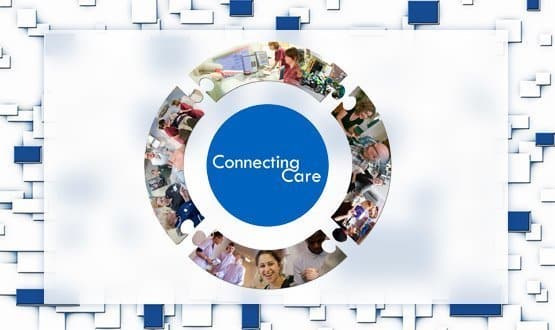Avon calling
- 16 June 2014

Getting an NHS trust to share data with a local authority is a challenge. Getting 13 health and social care organisations to share data, with the appropriate governance arrangements in place might, to some, seem almost impossible.
But don’t you dare mention that word to Andy Kinnear, the director of business intelligence and informatics at NHS South West Commissioning Support Unit, because he has done exactly that.
The Connecting Care programme in Bristol, which went live in December last year, shares real-time patient data between GPs, community providers, local authorities and three acute trusts.
Further plans will bring in the local ambulance trust, a mental health trust, an academic health science network and another council, bringing the total number of organisations involved to 17.
“Everyone uses different systems around here,” says Kinnear. “So Connecting Care is a piece of work we put together to deliver interoperability between health and social care systems across Bristol, North Somerset and South Gloucestershire.”
Built to expand
Kinnear says the project began in 2011, when IT directors across the region started to realise that all of their organisations were going to have electronic access to patient records; but they would not easily be able to share information.
This might not have mattered too much if patients only used one health or social care provider; but they don’t. “We thought it would be handy to share some of this stuff and wanted to create a single record,” Kinnear says.
The Connecting Care programme went out to tender and in February 2013 it signed a contract with Orion Health to build a clinical portal that the different systems could feed into.
As part of the first phase, 300 care professionals have been given user-based access to patient data through this portal.
This means staff can easily look up information such as patient demographics, laboratory results, radiology, allergies, diagnosis, medications, problems, procedures and documents relating to the patient, depending on what kind of access has been authorised.
“The first phase is a working system – a working, joined up clinical record – but also a business case for stage two,” says Kinnear. “Stage one is relatively modest, with about 300 users across the area. In stage two we’re planning on getting about 10,000+ users.”
Pulling information from a lot of different systems
The portal is fed with information from the core systems in use at different organisations. North Bristol Hospital NHS Trust and Weston Area Health NHS Trust use Cerner Millennium patient administration systems. University Hospitals Bristol NHS Foundation Trust uses a Medway PAS.
Servelec/CSE Healthcare’s RiO is used in the community, while the social care organisations in Bristol use Civica’s Paris, but in North Somerset they use the Swift adult social care system from Northgate. On the primary care side, the out-of-hours providers use the Adastra information system.
These systems feed into an integration engine and clinical data repository which then feeds into the portal. GP data is sent via Healthcare Gateway’s Medical Interoperability Gateway; which was first developed by EMIS and then INPS.
”The portal itself is the visible bit, but there’s a lot of capability behind it. It’s essentially an interoperability programme,” says Kinnear.
“The systems are feeding in at the moment and it’s read only. We’ve begun the capability to get to the stage where we can do write and read access, but we aren’t doing that yet.”
Jocelyn Palmer, the programme manager for Connecting Care, adds that although it sounds complicated, it all went surprisingly smooth, with just a few, small hiccups.
“The hospitals and MIG feed-in data in real-time. Whereas with RiO, we had some constraint and it had to be overnight, not real-time,” she says, adding that the same goes for the social care systems.
Officially exemplary
The Connecting Care programme was named as an exemplar integrated digital care record site by NHS England and got around £450,000 to develop stage two in the first round of bidding to the tech fund (‘Safer Hospitals, Safer Wards: Technology Fund’).
The programme is running a competition across the health and care providers to see who can drive up user numbers most. But seeing and hearing about benefits is going to be key.
Dr Simon Odum, an emergency consultant at North Bristol, says that using the system has definitely made life easier in a busy A&E. Previously, he says, a lot of time was spent on the phone to GPs, checking a patient’s prescription or allergies.
“I’m the top user in the department at the moment,” he says with a big smile. “It’s great; we can make sure patients get the right doses or if they have any allergies by simply logging into the system.”
The portal also enables the hospital to notify social care staff when a patient has been admitted, stopping their care plan and reducing costs.
Tracy O’Brien, information transformation lead at Bristol County Council, says that from her side of the fence she can go into the system and see if a user is in hospital, or due to be admitted, and change their service plan accordingly.
Social workers can also see who else is involved in a patient’s care. But one of the biggest differences has been an unexpected one; specialist call handlers have more information on the patient, and so are making different and better triage decisions, meaning that more early interventions are taking place.
At University Hospitals Bristol NHS Foundation Trust, the top users have been the pharmacists. Steve Gray, the trust's IT director, says they “claim to be saving a lot of time not having to chase information that’s difficult to get.”
“Also, they’re making decisions quicker because they are finding out things earlier. They get evidence of what the GP is doing so they don’t get it wrong.”
Tacking consent and information governance
Dr Martin Jones, chair of NHS Bristol Clinical Commissioning Group and a local GP, says that GPs have had information “locked up for years” and that it’s time to start sharing electronically.
“It’s the patient’s information and it’s for their safety and care. It’s common sense. We were sharing the information already, but now we’re doing it in a safe way and not with massive stacks of paper records being transported in the back of cars,” he says.
However, he adds that two of the big stumbling blocks have been information governance and patient consent. Households have been sent leaflets, letting them know what is happening, and leaflets have been put out in GP surgeries.
In terms of the information governance, there are several authorisation and authentication questions a user has to answer to log-in. The portal uses single sign-on, and has user-based access, meaning, for example, that a social worker can’t see which medicine a patient is taking.
Jones calls it “relationship based access”. “We try to teach to search on the NHS Number. We then have to answer the information governance questions, after which we get a menu that shows [the user] all the organisations and people involved in the patient’s care,” he says.
“You just click on the one you need – for instance by clicking ‘A&E’ you can see A&E admission and what’s been going on for the last six months.”
Andy Kinnear adds: “We continue to make sure people are informed. That never stops. As local governance changes we also need to reflect that.”
Eyes on the prize
All the organisations involved are contributing funding out of their budgets to Connecting Care – although they declined to say exactly how much – and it has made it through some difficult meetings.
The programme board has 15 members from different organisations. Politics is an additional complication for the local authorities; although the two NHS teaching trusts don’t always see eye to eye, either.
“Each of these organisations are bringing to the table its own interests and drive, and got a particular agenda” says Kinnear. He recommends going out for a curry and/or drinks when things get tough – and to keep reminding people why they are all involved.
“The person going through the system is just interested in their records being available to the person treating them. Holding that ‘one patient’ kind of mantra has been quite critical as we’re going through this, as it makes us come back to why are we doing it.”
Jocelyn Palmer adds: “We got close to giving up sometimes, but then we thought: 'When we got this far, we might as well finish the job'.”
Still looking forward
Looking forward, one of the next steps is to introduce electronic discharge, as well as bringing the ambulance trust, The West of England Academic Health Science Network and mental health into the portal.
“We’re starting to see conversations taking place on the back of this project and getting people from different systems together and it’s generating opportunities outside of it as well,” says Kinnear. “If we can get people from all these organisations together in a room, we should definitely be able to do this.”
Organisations involved in Connecting Care:
Bristol City Council; NHS Bristol Clinical Commissioning Group ; North Somerset CCG; South Gloucestershire CCG; University Hospitals Bristol NHS Foundation Trust ; North Bristol NHS Trust; Weston Area Health Trust; North Somerset Council; Brisdoc (Out of Hours); Bristol Community Health; North Somerset Community Partnership; South Gloucestershire Community Health Services (Sirona); NHS South West Commissioning Support Unit; The West of England Academic Health Science Network; South Gloucestershire Council; Avon and Wiltshire Mental Health Partnership NHS Trust ; and South Western Ambulance Service NHS Foundation Trust.






